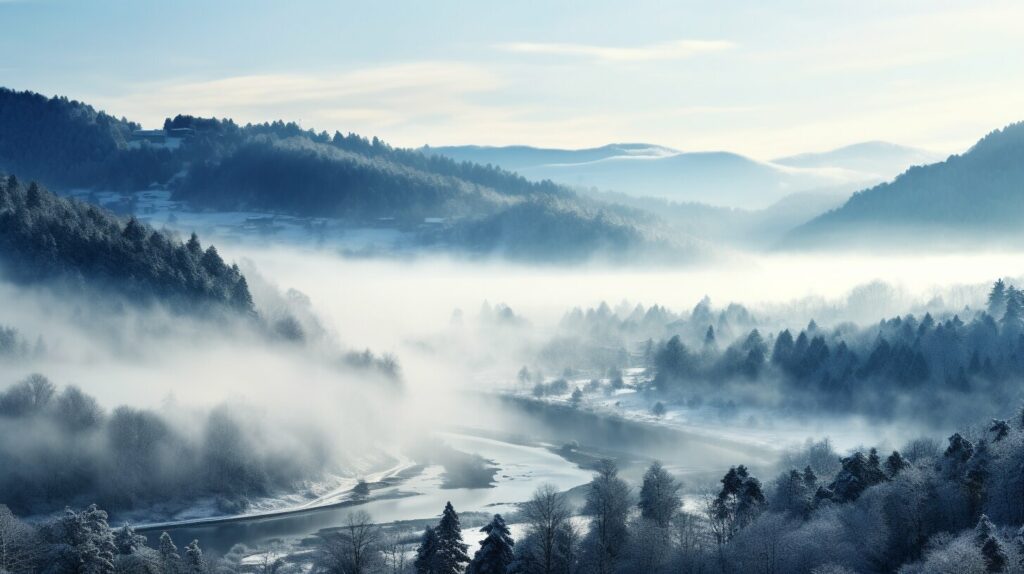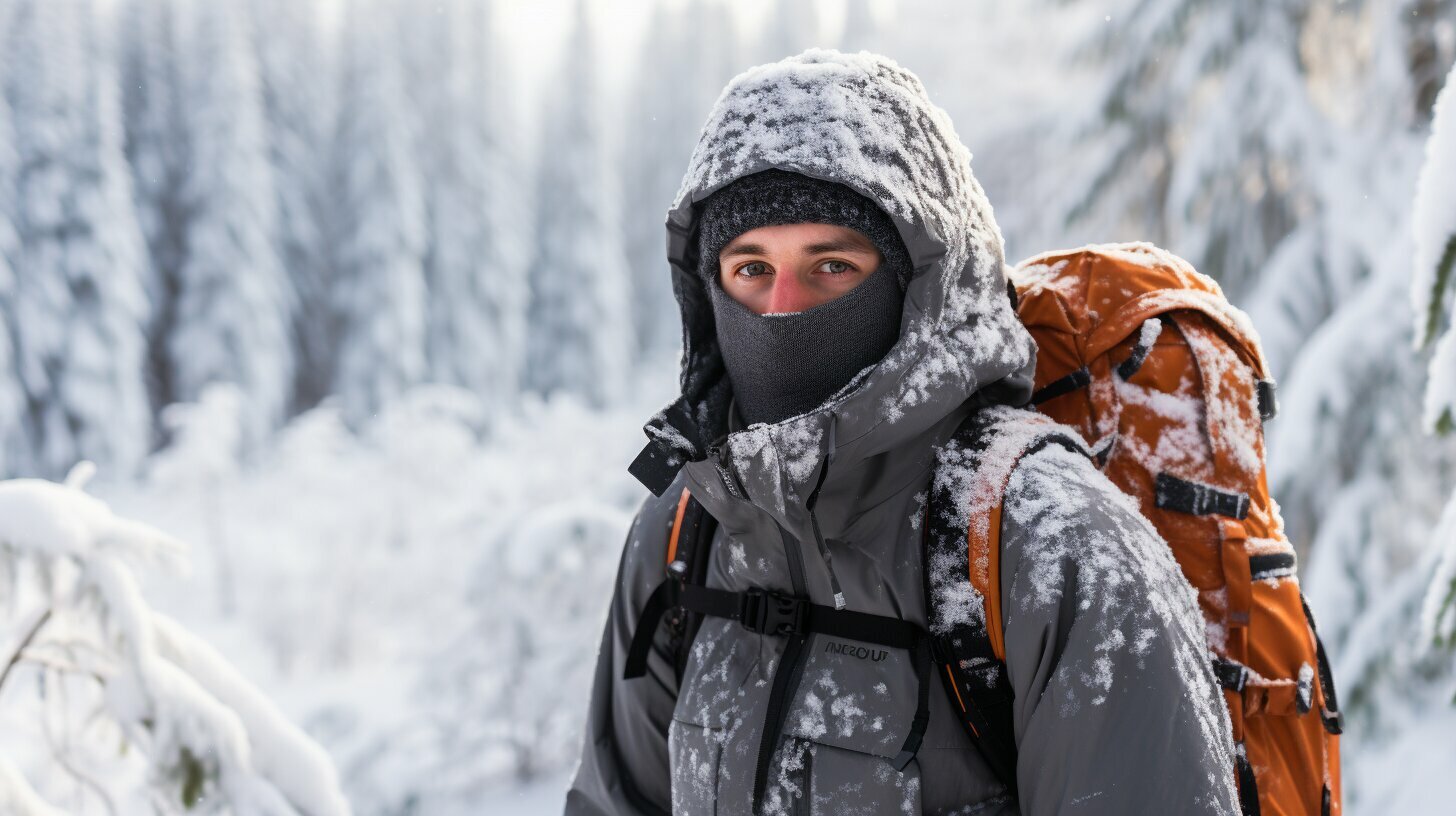Winter can be a beautiful time of year, but it also brings treacherous conditions that can be life-threatening. One of the most critical elements to consider when dealing with snow is finding shelter in snowy conditions. Staying warm, dry, and protected from the elements is essential to your survival, and knowing how to build or identify suitable shelter can make all the difference.
Whether you’re camping, hiking, or experiencing a sudden snowstorm, this guide will provide you with the knowledge and skills needed to stay safe in a winter environment.
Key Takeaways
- Finding shelter in snowy conditions is crucial for survival and safety
- Know different types of shelters, from improvised to natural, and how to build them
- Stay alert and prepared by carrying essential gear and equipment
- Follow important safety precautions when building and staying in snow shelters
Understanding Snowy Conditions and the Need for Shelter
In snowy conditions, finding shelter is crucial for your survival. Exposure to extreme cold temperatures can be deadly, especially if you are caught off guard without proper shelter. When a snowstorm hits, your environment can become unpredictable and dangerous. To stay safe and prepared, it’s important to understand the challenges posed by snowy conditions and have a plan in place to find or create suitable shelter.
There are a variety of cold weather shelter options that you can use in a snowstorm survival situation. Traditional shelters like cabins and igloos may not always be an option, so it’s important to be familiar with different types of shelters that you can create in an emergency. Some of these options include snow caves, snow trenches, and snow forts. Each of these shelters has its specific benefits and drawbacks, so it’s important to assess your situation and determine which one is best for you.
Disclosure: When you buy through links on our site, we may earn an affiliate commission.
Remember: being prepared and having a basic knowledge of cold weather shelter options can be life-saving in the event of a snowstorm.

Winter Storm Preparedness
Before we dive into the specifics of snow shelter building techniques, let’s go over some basic winter storm preparedness information. Knowing what to expect in snowy conditions and what items to have on hand can help you stay safer and more comfortable.
- Check weather reports and stay informed about potential snowstorms in your area.
- Carry essential supplies such as extra warm clothing, a first aid kit, and a flashlight.
- Consider investing in a portable emergency shelter, such as a tent or bivouac.
- Be familiar with natural features in your surroundings, such as caves, trees, and rock formations, that can be used as an improvised shelter.
By staying alert and prepared, you’ll be better equipped to handle the challenges of snowy conditions and find or create suitable shelter when necessary.
Building Snow Shelters: Techniques and Tips
In snowy environments, building a snow shelter can be a life-saving skill. Here are some techniques and tips for constructing different types of shelters:
1. Snow Caves
Snow caves are one of the most effective shelters in snowy conditions. To build a snow cave, find a bank of snow that is at least 4-5 feet deep. Dig into the bank from one side to create a small entrance. Then, dig out the inside of the cave to create enough space to lie down comfortably. Make sure to leave at least 1-2 feet of snow between you and the outside of the cave to provide insulation.
Tip: Use a ski pole or stick to poke a small hole in the ceiling of the cave for ventilation.
2. Snow Trenches
If you don’t have a deep snow bank to work with, a snow trench can be a suitable alternative. Dig a trench in the snow that is deep enough to sit up in and lie down comfortably. Line the bottom of the trench with insulating materials like pine boughs or a sleeping pad.

3. Snow Forts
If you’re in a group, a snow fort can be a fun and effective shelter option. To build a snow fort, make a pile of snow about 5-6 feet high and 8-10 feet long. Then, dig a tunnel through the pile from one end to the other to create an entrance and exit. Dig out the inside of the fort to create space for everyone.
Tip: Use a tarp or emergency blanket to cover the entrance of the fort to keep the wind and snow out.
No matter which type of snow shelter you choose, make sure to insulate the ground with pine boughs or an insulating pad. This will provide an extra layer of insulation between you and the cold snow.
Improvised Shelter Options in Snowy Conditions
If you cannot build a snow shelter due to lack of suitable materials or tools, consider alternative options to keep yourself safe and warm. Natural features like caves, fallen trees, and rock formations can offer temporary shelter from harsh weather conditions. However, make sure to inspect the surroundings before settling in and keep an eye out for potential risks like falling rocks or unstable ground.
If you have portable emergency shelters like tents or bivouacs, use them as a backup option. They offer protection from the cold and wind, but make sure to anchor them firmly and keep them well-insulated to prevent heat loss.
Another option for improvised shelter is to utilize your vehicle if you have one. In some cases, your car may be the only viable option, and it can serve as a safe haven from the cold and wind. Make sure to keep the engine running periodically to maintain warmth, but also be mindful of carbon monoxide poisoning. Keep a window open or use a ventilation system to circulate fresh air.

Remember, when it comes to improvised shelter options, always prioritize safety and make sure to assess the situation before choosing a spot to rest.
Essential Considerations for Snow Shelter Safety
When seeking refuge in snowy conditions, ensuring your safety is crucial. Here are some essential considerations to keep in mind:
- Insulation: Use proper insulation materials to help trap heat inside the shelter. Dry leaves, pine needles, and even paper can provide additional warmth.
- Ventilation: Proper ventilation is key to avoid suffocation or carbon monoxide poisoning. Leave a small opening in the shelter to allow for air circulation.
- Positioning: Build your shelter away from any potential hazards like avalanches or falling branches. You should also avoid building on slopes or areas prone to flooding.
It’s important to remember that your shelter should prioritize safety over comfort. While you want to stay warm, it’s crucial not to sacrifice your well-being in the process.

Image Source: https://seowriting.ai/32_6.png
Gear and Equipment for Snow Shelter Survival
To ensure your safety and comfort in snow shelters, you need to have the right gear and equipment. Here are some essential items to pack before heading out into snowy conditions:
- Sleeping bag and insulating mat: Keep your body off the cold snow and ice with a high-quality sleeping bag and insulating mat designed for winter use.
- Heating devices: Portable heating devices like hand warmers, propane heaters, and candles can provide warmth when temperatures drop too low.
- Winter clothing: Dress in layers using moisture-wicking base layers, warm insulating layers, and waterproof outer shells.
- Emergency communication tools: Bring a fully charged cell phone, two-way radio, or emergency beacon to call for help in case of an emergency.
- First-aid kit: Pack a medical kit with essential supplies like bandages, antiseptic, pain relievers, and any necessary prescription medication.
- Snow shovel: A shovel will help you clear snow and build shelters more effectively.
Remember to pack according to your specific needs and the length of your trip. A well-stocked backpack with all the necessary gear can make a significant difference in your survival during snowy conditions.
If you’re unsure about what gear to pack or how to use it effectively, consider taking a winter survival course or consulting with a professional guide.

Staying Alert and Prepared in Snowstorms
When you’re facing snowy conditions, it’s crucial to stay alert and prepared to avoid any unexpected surprises. Keep the following tips in mind:
- Check the weather forecast regularly and keep an eye out for any winter storm warnings.
- Make sure to have a fully charged phone or other communication devices, preferably with backup batteries or solar chargers.
- Carry essential supplies with you, including extra clothing, food, water, and a first aid kit.
- Get to know your surroundings and identify viable shelter options beforehand.
- Be aware of potential hazards like avalanches and take necessary precautions to avoid them.
By staying alert and prepared, you can minimize risks and enjoy your snowy adventure safely. Don’t let the harsh winter conditions catch you off guard!

Conclusion
Remember, finding shelter in snowy conditions is critical for your survival and safety. Being prepared and knowledgeable on how to build suitable shelters can truly make a difference in harsh winter environments.
Always keep in mind the challenges posed by snowy conditions and the potential dangers of exposure to extreme cold. Understand the different types of shelters that can be used in winter survival situations, such as snow caves, snow trenches, and snow forts.
When traditional snow shelters are not feasible, explore alternative shelter options like natural features such as caves, fallen trees, and rock formations or portable emergency shelters like tents and bivouacs.
Remember to take important safety precautions when building and staying in snow shelters. Insulation, ventilation, and proper positioning can minimize risks and ensure warmth and comfort.
Make sure you have essential gear and equipment before seeking shelter in snowy conditions, including items like sleeping bags, insulating mats, heating devices, and emergency communication tools.
Stay informed about weather conditions and potential snowstorms, have an emergency plan, know your surroundings, and carry essential supplies at all times.
Most importantly, prioritize your well-being in winter environments. Stay prepared, practice building shelters, and stay safe out there.
FAQ
Q: How important is it to find shelter in snowy conditions?
A: Finding shelter in snowy conditions is crucial for staying safe and protecting yourself from the dangers of extreme cold. It helps to prevent hypothermia and other cold-related illnesses.
Q: What are the different types of snow shelters?
A: There are various types of snow shelters that can be built in winter survival situations, including snow caves, snow trenches, and snow forts. Each has its own construction techniques and benefits.
Q: What are some alternative shelter options in snowy conditions?
A: When traditional snow shelters are not feasible, you can consider using natural features like caves, fallen trees, and rock formations as improvised shelters. Portable emergency shelters like tents and bivouacs are also options.
Q: How can I ensure safety in a snow shelter?
A: It is important to consider insulation, ventilation, and proper positioning when building a snow shelter. These factors help to minimize risks and ensure warmth and comfort inside the shelter.
Q: What gear and equipment should I have for snow shelter survival?
A: Essential gear and equipment for snow shelter survival include items like sleeping bags, insulating mats, heating devices, and emergency communication tools. These items help to provide warmth and facilitate communication in harsh winter conditions.
Q: How can I stay prepared for snowstorms?
A: Staying informed about weather conditions and potential snowstorms is important. Having an emergency plan, knowing your surroundings, and carrying essential supplies at all times will help you stay prepared in snowstorms.




